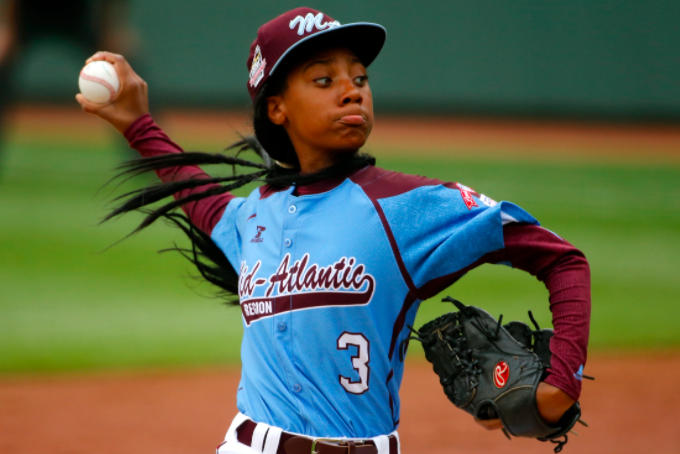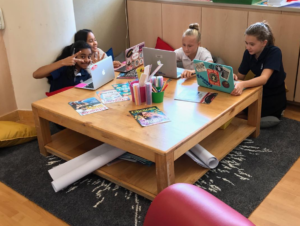Standard 2: Students will analyze the influence of family, peers, culture, media, technology, and other factors on health behaviors.
… Over the last year or so, there’s been a large amount of attention in the media on gender stereotypes and how they can be limiting for all of us, especially children. So what exactly are gender stereotypes? According to the site PsychologyDictionary.org, gender stereotypes are the relatively fixed and overgeneralized attitudes and behaviors that are considered normal and appropriate for a person in a particular culture based on his or her biological sex. So essentially, they’re the color-coded boxes we put people in from a very young age. Girls wear pink, boys wear blue. Girls like dolls and boys like sports. But that’s not how things actually work, and over the last few years, we’ve had some amazing role models start to step out and challenge those perceived norms.
In 2014, Mo’ne Davis became the first female Little League star to pitch a no-hitter, and a video of President Obama putting sports equipment into Toys for Tots gift bags for girls went viral.
“Girls play T-ball, too. I’m just trying to break down these gender stereotypes.”
– President Obama
Obama confronts gender stereotypes at Toys for Tots event https://t.co/wqRz4uurQnpic.twitter.com/KZUT8ysFub
— Globe Politics (@GlobePolitical) December 25, 2014
As stories keep popping up about people challenging these stereotypes, it’s important that we address the issue in our health classes. Not only as a way to encourage students to express themselves and explore their identities, but also to foster an environment of inclusion. Here are five resources and lessons for teaching kids about gender stereotypes in the classroom.
1. Welcoming Schools
In this resource from the Human Rights Campaign, teachers will find background information, as well as lesson plans, designed to teach elementary students about gender. This is an important time to begin addressing stereotypes, as this is the age when kids are the most likely to be targeted by companies to select toys based solely on perceived norms. Girls should feel free to play with Legos, and boys can hang out in the kitchen if they want. These lessons can help teachers create a classroom atmosphere that encourages kids to play with the toys they feel most drawn to… without the fear of judgment from their peers.
2. Gender Stereotypes Online
In this interactive lesson for grades 6-8 from Common Sense Media, students are tasked with creating an avatar for an online game. Through the process of creating both a male and female character, they realize how limiting video games sometimes are in the physical characteristics they let people select. I knew this was an effective lesson when, just last year, I heard a 6th grade boy get so angry at his screen that he yelled out, “Not every girl wants to wear a princess dress!” Sometimes it’s best to let kids figure these things out on their own.
3. #LikeAGirl
When did doing something “like a girl” become an insult? And what exactly does that even mean? This is what the folks at Always set out to question with their new ad campaign last year. This is a powerful video to show to the kids to open up the discussion, and at over 50 million views, it’s apparently made quite an impact on a large amount of people.
4. Be a Man
Girls are not the only ones limited by gender stereotyping. Boys are constantly bombarded with messages about what it means to “be a man.” They are taught to hide their feelings, and to fit into a prescribed idea of masculinity that can be limiting to their social and emotional development. Maria Shriver has teamed up with The Representation Project to create a documentary, The Mask We Live In, which is setting out to change the conversation about what it means to display a “healthy masculinity.” You can read about their work in this recent article from Time, or check out their site for more details. They’re offering screenings around the country, and free pre-screening licenses and an accompanying curriculum for students or schools who would like to bring the film into their community.
5. Smart Girls at the Party

Amy Poehler is kinda my hero. In addition to breaking the ceiling in the male-dominated comedy industry, she’s also found a way to positively influence young girls through her amazing YouTube channel, Smart Girls. Through her site, she seeks to empower girls though giving them examples of women doing amazing things with their brains. And with a heavy emphasis on those with careers in science and technology, she really stands to make a difference in the fields that need it most. So many great resources and role models out there. By just sharing a few of these with the students, you can get the conversation started, and see what else they discover on their own. —



